Flower Library
Lotus Flowers: Meaning, Planting, and Effective Care
Lotus flowers, symbols of purity and enlightenment, have become an inseparable part of Vietnamese culture. With their elegant beauty, profound feng shui meanings, and diverse applications in daily life, lotus flowers are an endless source of inspiration for art, architecture, and cuisine. In this article, we will explore the unique significance, uses, and effective methods to grow and care for lotus flowers.
What is a lotus flower?
The lotus flower, scientifically known as Nelumbo nucifera, is an ancient aquatic plant thriving in marshes, ponds, and slow-moving waters. With its ability to rise above the mud, the lotus symbolizes purity, resilience, and the spirit of overcoming challenges.
Biological characteristics of the lotus
- Stem: Submerged, tuberous, with a high regenerative ability.
- Leaves: Large, circular, glossy green, with a diameter of 60–70 cm.
- Flowers: Multiple interwoven petals, varying in color from white and pink to blue.
- Fruit: Lotus pods contain seeds widely used in cuisine and medicine.
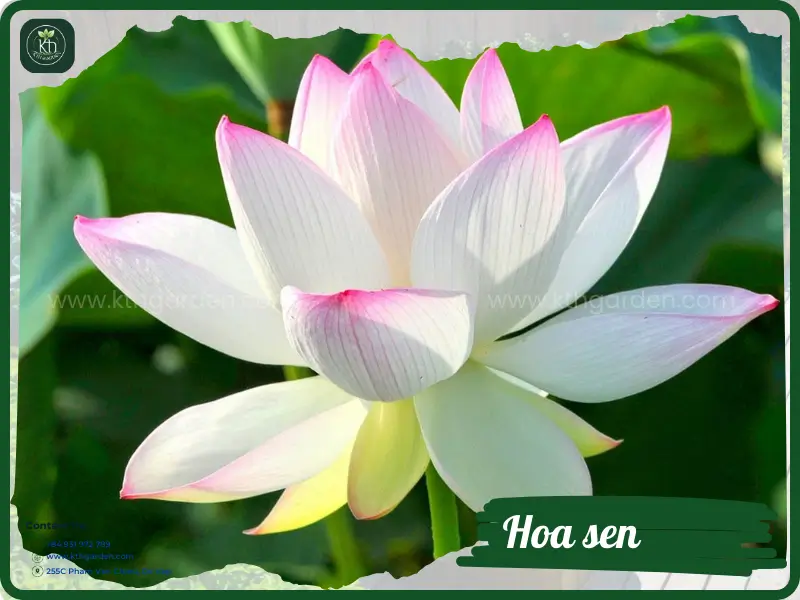
Discover more about succulent lotus flowers—ornamental plants symbolizing resilience.
Why is the lotus a special symbol?
The lotus is deeply connected to Vietnamese culture, religion, and daily life. Rising from muddy waters, the lotus not only stands out for its beauty but also embodies resilience and adaptability.
Cultural and Feng Shui significance of the lotus
In Vietnamese culture
The lotus, as Vietnam’s national flower, represents the purity and strength of the Vietnamese soul. Its image often appears in poetry, painting, and traditional architecture.
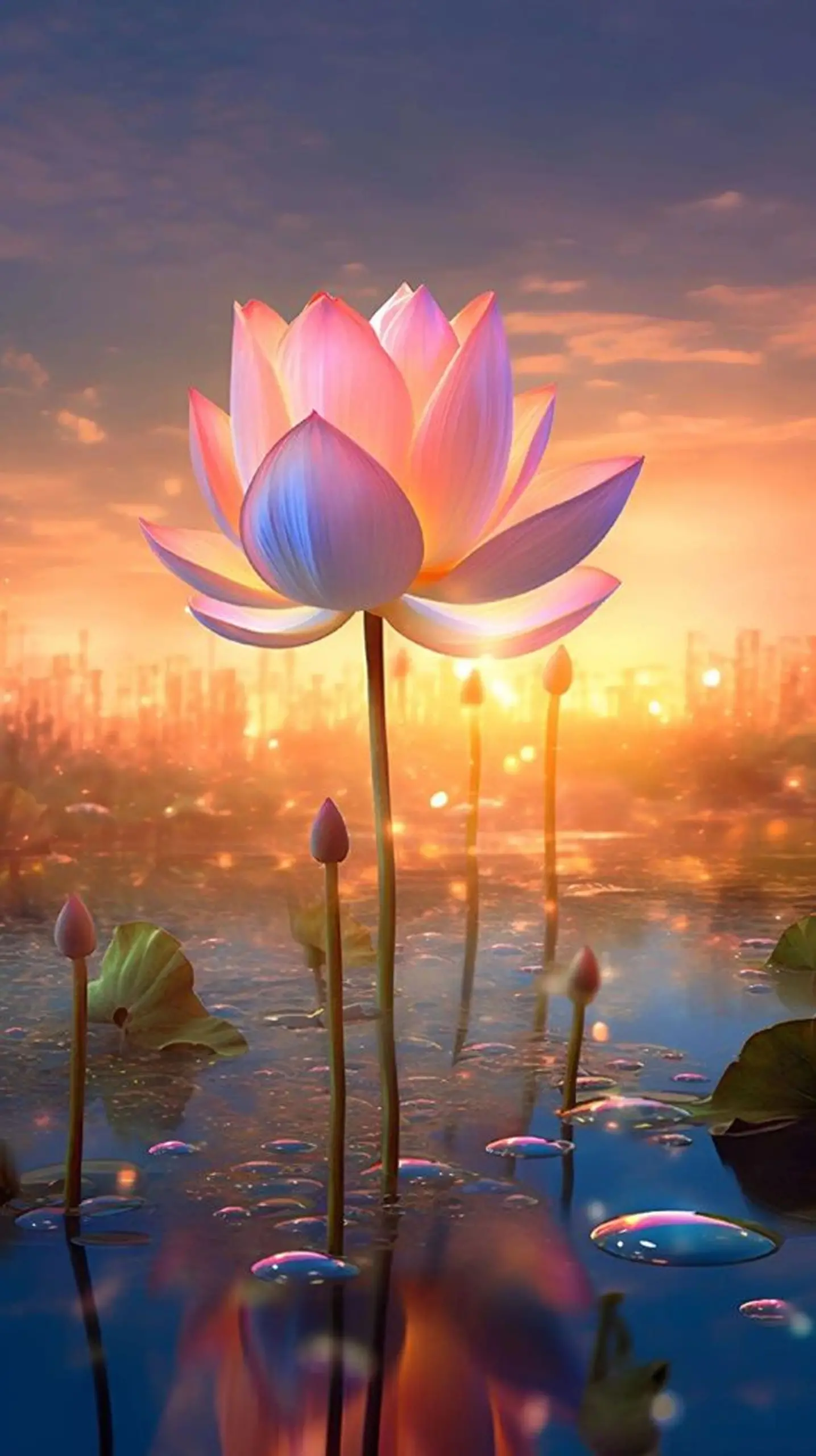
In Feng Shui
- Brings peace: The lotus neutralizes negative energy, creating a serene and harmonious environment.
- Wealth and prosperity: Placing lotus flowers at home or in the workplace attracts fortune and positive energy.
- Spirituality: In Buddhism, the lotus symbolizes enlightenment, purity, and wisdom.
Interested in other Feng Shui plants? Check out Feng Shui plants for Tet to bring prosperity to your space.
Uses of the lotus in daily life
Space decoration
Lotus flowers are used to enhance living spaces, from ancestral altars to office desks.
Cuisine
- Lotus seeds: Used in sweets, soups, or as fillings for pastries.
- Lotus root: Prepared in stir-fries, soups, or stews.
- Lotus stamens: Brewed into tea, offering relaxation and detox benefits.
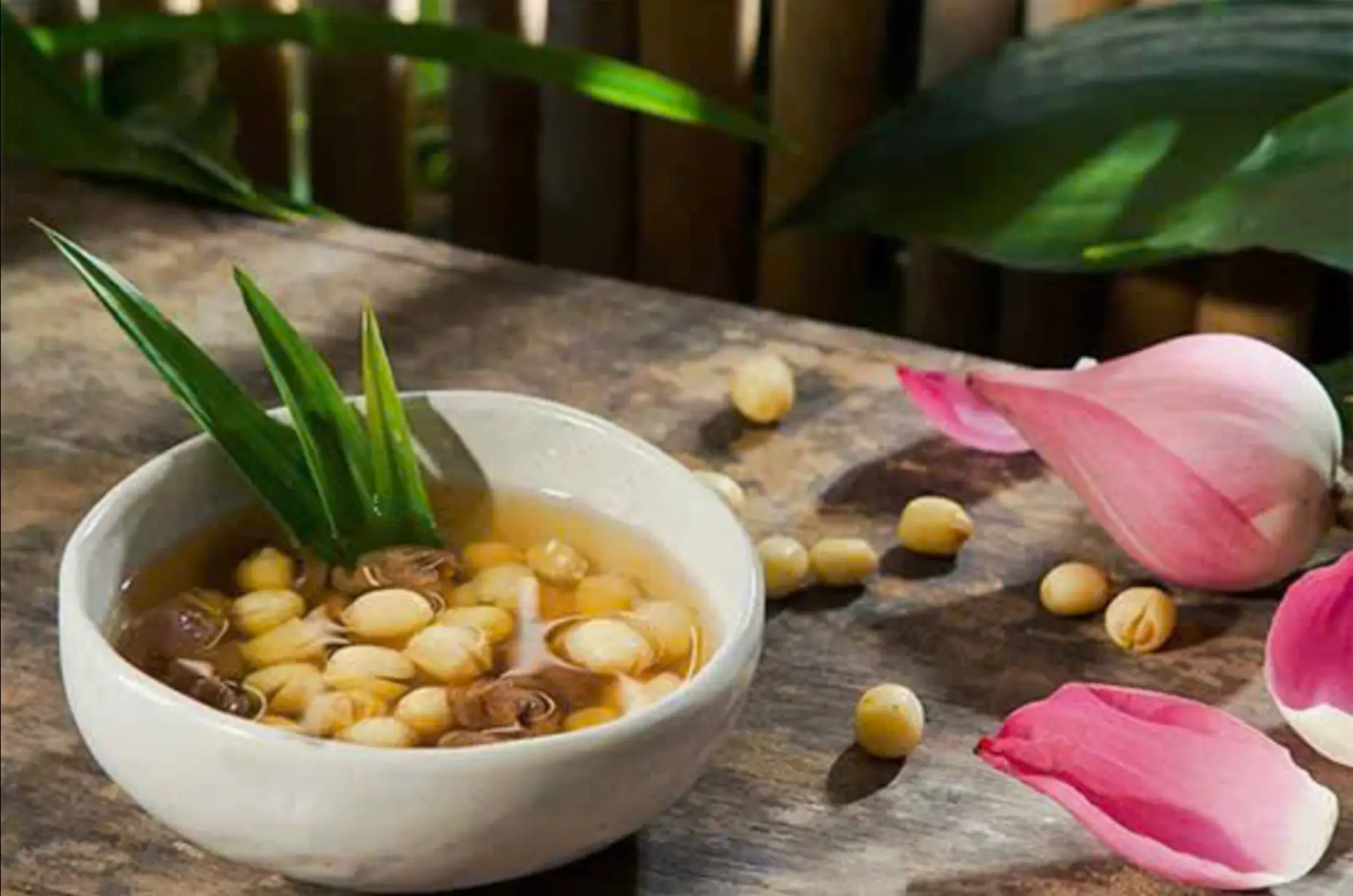
Medicine
- Lotus seeds: Help with insomnia and strengthen the nervous system.
- Lotus leaves: Support weight loss and cooling the body.
- Lotus stamens: Help stabilize blood pressure and reduce stress.
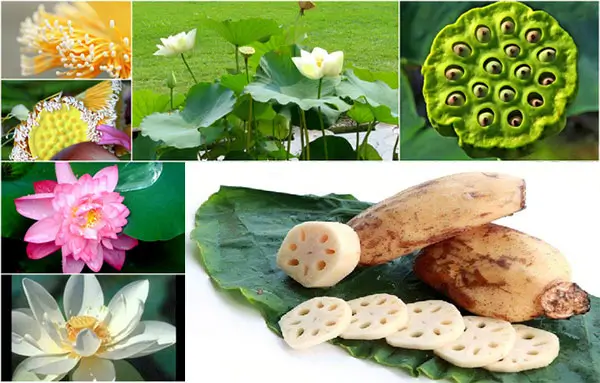
Explore more useful knowledge about plants and vegetables to maximize the benefits of greenery in your life.
Popular types of lotus and their meanings
- White lotus: Represents purity and serenity.
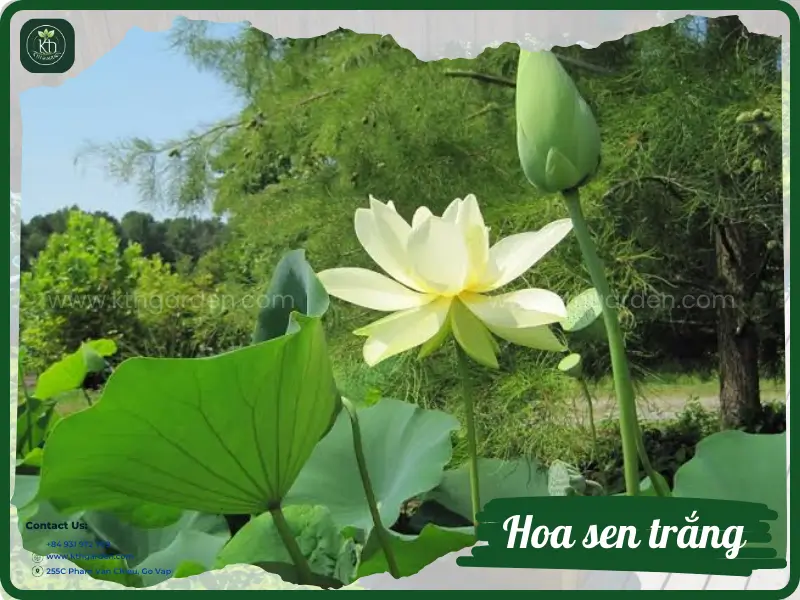
- Pink lotus: Vietnam’s national flower, a symbol of kindness and nobility.
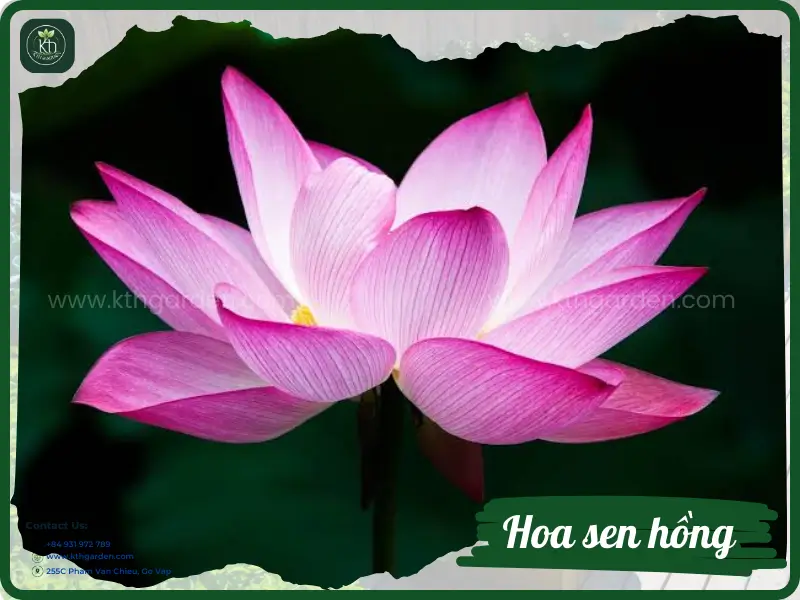
- Red lotus: Symbolizes love and intense passion.
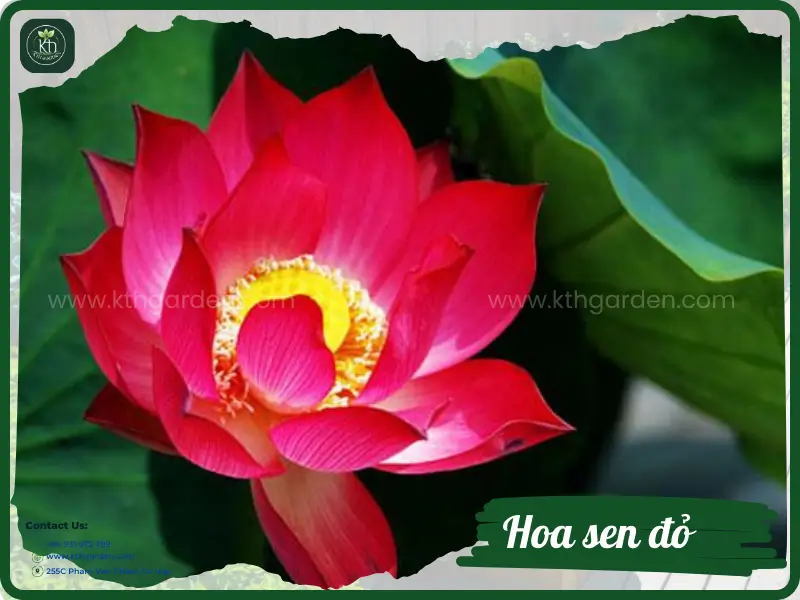
- Blue lotus: Signifies wisdom, willpower, and enlightenment.
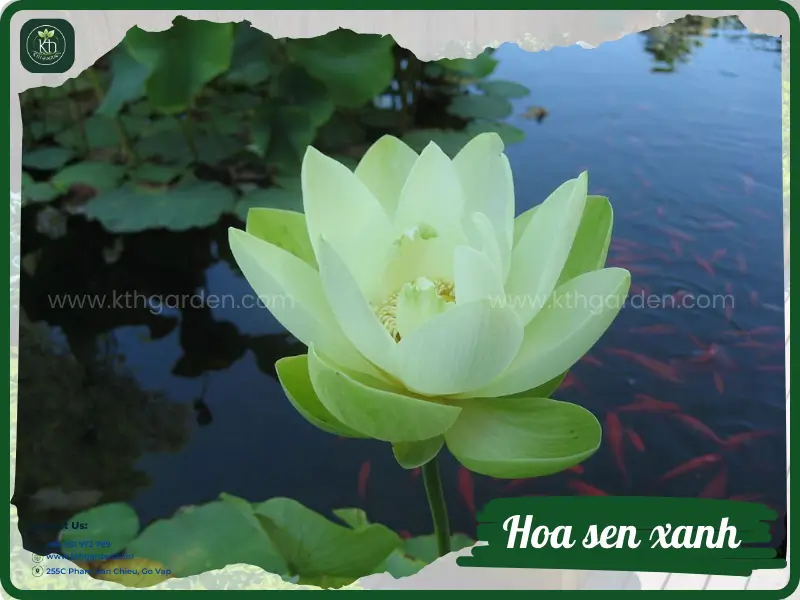
- Golden lotus: Reflects wealth and prosperity.
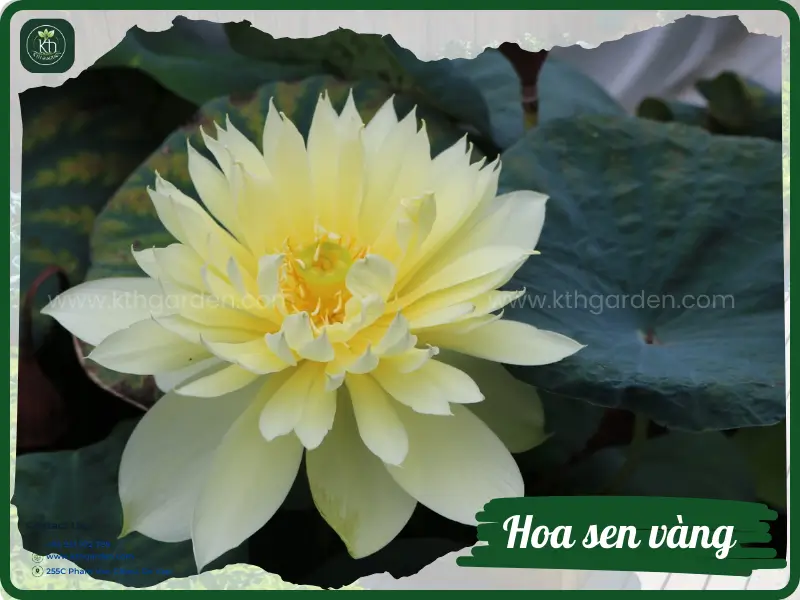
Learn more about peach blossoms, the symbolic flower of spring.
How to grow and care for lotus effectively
Growth conditions
- Soil: Rich, organic mud.
- Water: Clean, unpolluted water.
- Light: 6–8 hours/day for optimal photosynthesis.
Planting guide
- Seed propagation: Soak seeds in warm water until sprouted, then plant in pots or ponds.
- Tuber propagation: Select firm, healthy tubers and plant them directly in mud.
Care instructions
- Fertilize regularly for optimal growth.
- Prevent pests like aphids and snails.
- Control pests using natural methods.
- Prune old leaves to improve air circulation.
Lotus in architecture and art
- Architecture: Lotus motifs appear in structures like temples and Buddhist stupas.
- Art: Lotus inspires endless creativity in painting, poetry, and sculpture.
- Notable structures:
- Lotus Temple (India): A unique design inspired by the lotus.
- Buddhist temples: Lotus represents serenity and sacredness.
Don’t forget to read about pine trees, the symbol of the festive season.
FAQs about lotus flowers
- When do lotus flowers bloom?
- Lotus flowers typically bloom in summer or fall, depending on the region.
- How is a lotus different from a water lily?
- Lotus has a tuberous stem that rises above the water, whereas water lilies float on the water’s surface.
- How can I grow lotus at home without a pond?
- You can use large pots or containers filled with clean water.
Conclusion
Lotus flowers are not only beautiful and meaningful but also have numerous applications in daily life. For more information or to explore other plants, visit kthgarden.com today!

Ms. Nguyễn Thu Trang is directly responsible for all the content on the KTH GARDEN website. The articles are crafted based on an extensive knowledge foundation in green plants, organic vegetable cultivation, and landscape design, combined with reputable reference materials (clearly cited) and her vast practical experience. Readers can therefore trust the accuracy and reliability of the information, while also gaining valuable insights that can be effectively applied in real life.

 Tiếng Việt
Tiếng Việt
